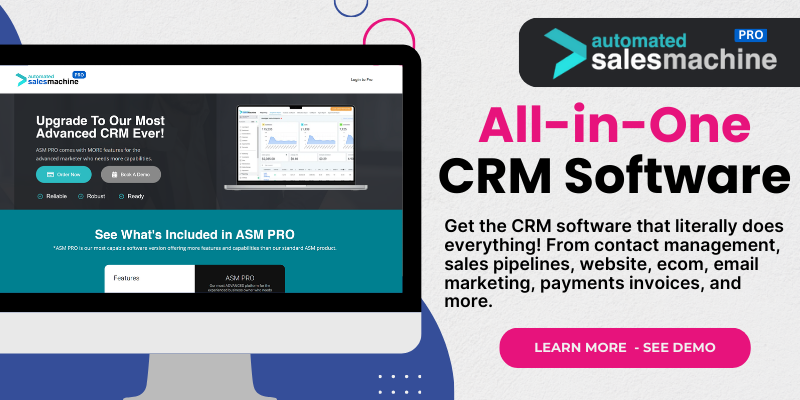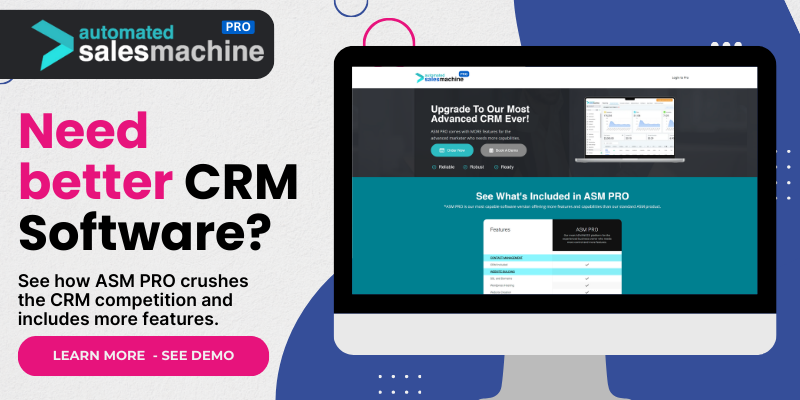Define Your CRM Goals
Understanding Your Business Needs
Before diving into the nitty-gritty of CRM software development, it’s crucial to understand what you want to achieve. For instance, are you looking to boost sales, improve customer relationships, or streamline processes? Knowing your goals helps steer the project in the right direction. Think about your unique business model and how a CRM can enhance it.
I’ve been there—sitting at my desk, brainstorming ideas without a clear direction. What I found helpful was writing down everything I wanted the software to accomplish. This included tracking customer interactions, managing leads, and handling customer service. Get specific; the more detailed, the better!
Also, consult with your team or stakeholders to gather their insights. They might have perspectives you haven’t considered, which can be invaluable. After all, a successful CRM should cater to its users, so getting input from the ground up is essential!
Identifying Key Features
Once you know your goals, it’s time to think about the features you want to include in your CRM. Features such as contact management, lead tracking, and reporting tools are pretty standard. But you’ll also want to consider what sets your CRM apart from others in the market.
From my experience, integrating automation tools can be a game-changer. Imagine sending follow-up emails automatically or setting reminders for calls—these little touches can save a ton of manual effort. So think about what you wish your past CRM had and build on that!
Don’t forget about mobile accessibility! Nowadays, everyone is on the go, and having a mobile-friendly interface ensures you can access crucial information anytime, anywhere. The more accessible your CRM, the more likely your team will use it effectively.
Determining Your Budget
Ah, the budget—the not-so-fun part of any project. It’s easy to get carried away with features and tools, but you have to keep your financial constraints in mind. Start by estimating how much you can allocate for this CRM project. It’s best to draw a clear line to avoid overspending.
I often break down the costs into categories: development costs, ongoing maintenance, and potential training for my team. Knowing these figures upfront helps you make informed decisions about which features to prioritize and where to trim the fat.
Lastly, be realistic about your budget. If you know a feature is going to be a huge investment, weigh its value to your overall goals. Prioritize what’s essential for launch and plan for future improvements once you’ve got the initial version up and running.
Choose The Right Development Approach
In-House Development vs. Outsourcing
Should you develop the CRM software in-house or hire a third-party provider? This question can be a bit tricky. On one hand, building it in-house means you have full control over the project, which can be great for customization. Plus, you get all that proprietary knowledge that can be a differentiator.
However, outsourcing can speed up the process. There are talented developers out there who specialize in building CRMs, so leveraging their expertise can get you to market faster. I’ve seen businesses successfully form partnerships with development agencies and come out ahead.
In the end, it boils down to your resources and timelines. If you have the right team and expertise, in-house development could be the way to go. But if you need results quickly, checking out agencies might be the better path.
Choosing Technology Stack
Your technology stack includes the core technologies you’ll use to build your CRM, from the programming language to the database. I’ve found that taking time to select the right stack can save you headaches later on. For example, if your team is more experienced with JavaScript than Python, it might be smarter to stick with what you know.
Consider scalability as well. As your business grows, you want a stack that can adapt to increased demand without a hitch. I’ve learned the hard way that going cheap at this stage can lead to bigger problems down the line.
Moreover, ensure that your tech choices are compatible with other tools you’re using or might want to implement in the future. An integrated system will save you lots of hassle, making data flow seamlessly between applications.
Timeframe and Milestones
Setting a timeline is crucial when developing CRM software. Trust me, a project without deadlines can quickly turn chaotic. I like to outline key milestones that allow me to measure progress. This helps keep everyone aligned and motivated.
When creating your timeline, consider internal processes, testing phases, and potential iterations after user feedback. From my experience, regular check-ins ensure that you’re on track and can tweak things if delays come up.
Also, be transparent about your timelines with all stakeholders. This builds trust and prevents frustration if things don’t go exactly as planned. Flexibility is key here; adjust your schedule based on real-time feedback and issues that arise during development.
Design and User Experience
Creating User-Centric Design
The design of your CRM software can make or break user engagement. A user-friendly interface means higher adoption rates and better usage overall. I’ve always emphasized keeping things simple and intuitive. Users should be able to find what they need without hunting around.
I recommend gathering user feedback at this stage. If you can, run a few usability tests with actual users. Their insights can be invaluable and might highlight roadblocks you hadn’t noticed. It’s about designing with the end-user in mind!
And don’t forget about aesthetics! Good design isn’t just functional; it should also be visually appealing. Use colors and layouts that reflect your brand and resonate with your audience. A polished look can enhance credibility and professionalism.
Integration with Other Tools
Next up—don’t forget about integrations! Many businesses use a range of tools like email, calendar, or project management software, and your CRM should definitely play nice with them. I’ve often found that the more a CRM can integrate with existing systems, the more valuable it becomes for users.
You should prioritize integrations based on what your team currently uses or is likely to use in the future. For instance, if many of your leads come from online forms, integrating with your email marketing tool could be a no-brainer.
Building an API that allows for easy integration can make your CRM not only more powerful but also attractive to potential users who love using tools they’re already familiar with. It’s all about enhancing the user experience!
Testing and Feedback
You can’t just build your CRM and launch it without testing! Testing is crucial to ensure that everything works as expected. Establish a testing phase where you check for bugs, usability issues, and overall user experience. In my case, I discovered that involving my team in this phase was super helpful—they caught things I completely missed.
Get feedback and iterate based on what users say. This could mean adjusting features or fixing issues to enhance functionality. Listening to users can make a significant difference in creating a tool that genuinely meets their needs.
Remember, testing doesn’t end at launch—continue to gather feedback even after your CRM goes live. This kind of culture will help you stay ahead of the competition and keep improving your product over time.
Launch and Marketing Strategy
Pre-Launch Preparation
Pre-launch is where all the hard work pays off! Start getting your audience excited before your CRM launches. Use social media teasers, email announcements, or even a countdown page to build anticipation. I remember having a ton of fun brainstorming creative ways to hint at features.
Offering early access or beta testing for select users can be a great strategy. This allows you to fine-tune your product with real users and gather valuable initial feedback that you can act upon immediately.
Don’t forget to prepare your documentation and support materials too. Users will likely have questions about functionalities, so clear guides and FAQs are a must to provide a smooth onboarding experience.
Choosing the Right Marketing Channels
Now that you’ve got your product ready, it’s time to think about how to promote it. Think about your audience and where they hang out—are they on social media, reading blogs, or attending industry events?
I’ve found that a mix of channels often works best. Content marketing is a long-term play—create useful blog posts and guides that answer common questions your target audience may have. Leverage social media for direct engagement and build your community there.
Don’t forget about demos or webinars! These are great opportunities to showcase your CRM’s features and answer any questions from potential users. They help build trust and authority in your niche.
Post-Launch Support and Updates
Once launched, your job isn’t over! Monitoring how users interact with your CRM is vital. Set up analytics to see what features get used the most and which ones may need tweaks. This data will guide your future development plans.
Engage with your users regularly through support channels. I’ve learned that responsive support can turn frustrated users into loyal advocates for your product! Encourage feedback and be open to suggestions—they may have ideas that enhance usability you hadn’t considered.
Finally, plan for periodic updates and new features. Keeping your product fresh will help retain users and attract new ones. Always stay ahead of the game with improvements based on user feedback and industry trends.
FAQs
Q1: What’s the first step in creating CRM software?
A1: The first step is to define your CRM goals by understanding what you want to achieve, whether it’s improving sales, customer satisfaction, or efficiency.
Q2: Should I develop my CRM in-house or outsource?
A2: It really depends on your resources. If you have a capable team and enough time, in-house might be better. Otherwise, consider outsourcing to a specialized agency.
Q3: Why is user experience so important in CRM software?
A3: A great user experience leads to higher adoption rates and better utilization of the CRM features, which ultimately drives success in achieving your business goals.
Q4: How often should I collect user feedback after launch?
A4: Regularly! Establish a culture of continuous improvement based on user feedback, and keep an open line of communication with your users.
Q5: What should I include in my marketing strategy for the CRM?
A5: Your marketing strategy should include pre-launch excitement tactics, a mix of marketing channels (blogs, social media, demos), and solid post-launch support.

